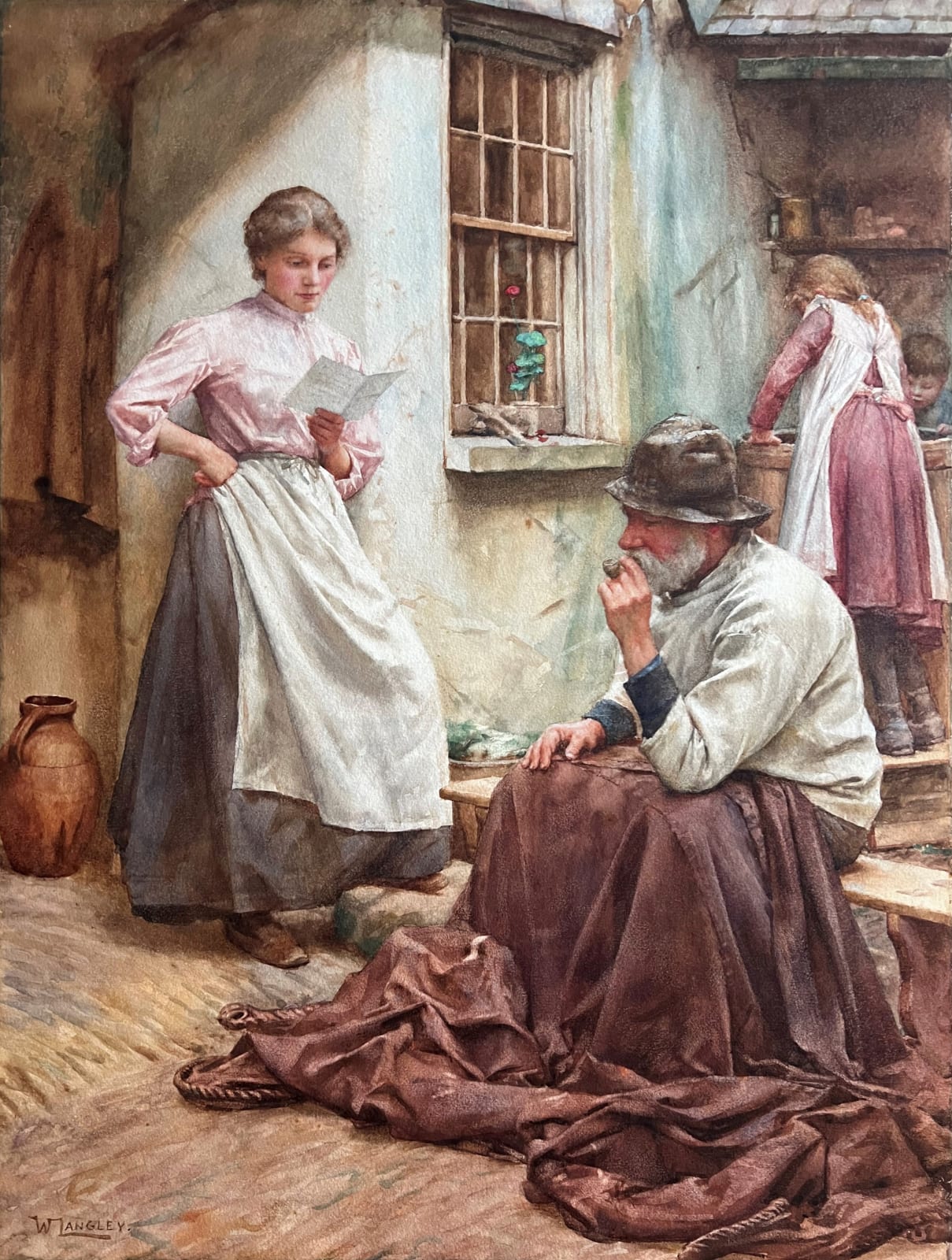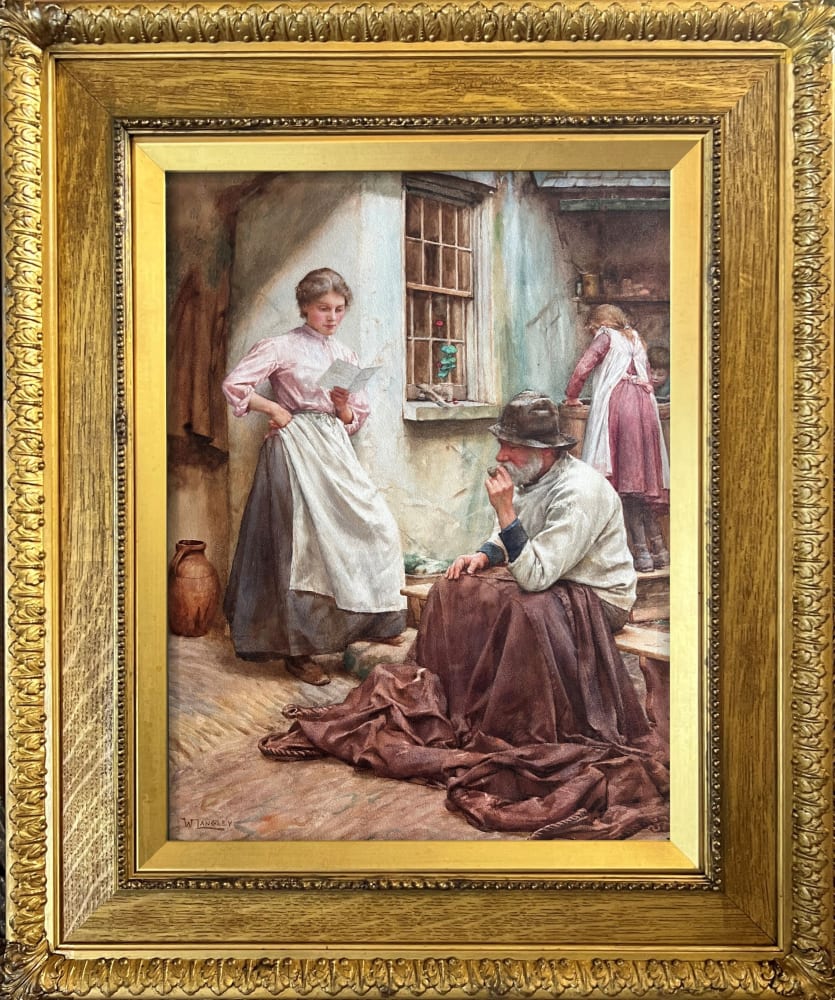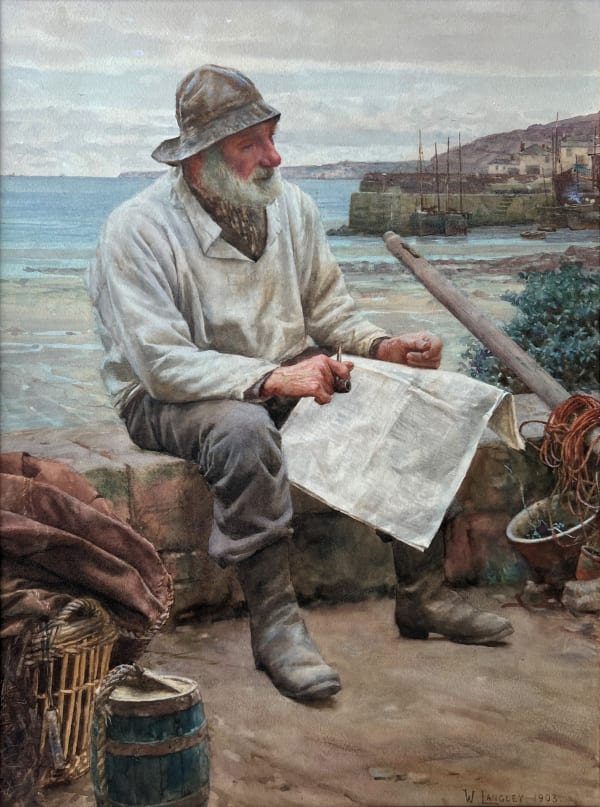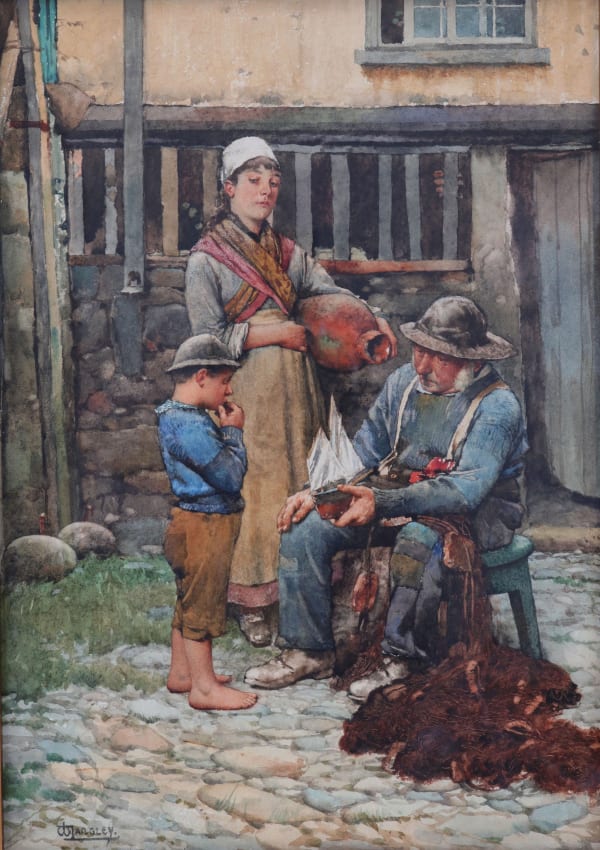Walter Langley 1852-1922
Framed: 72.9 x 60.0 cm (28 3/4 x 23 5/8 ins.)
Further images
Provenance
W. Victor Williams (purchased from the artist in 1901 for £35).
W. A. Clark (a gift from the above in 1916). Thence by descent (given the title Pleasant News) to the great grandaughter of W.A Clark.
Sotheby's, 15 Dec 2016 Victorian, lot 49, Pre-Raphaelite & British Impressionist Art (15,000 - 25,000 GBP).
Private UK collection.
Literature
Roger Langley, Walter Langley, Pioneer of the Newlyn Art Colony, Bristol, 1997, p.168Painted in 1901, A letter sent home depicts the courtyard of a Newlyn cottage; a fisherman pauses from repairing sail cloth to smoke his pipe and consider the content of the letter read to him by a young women, whilst two children draw water from a barrel behind. There is no sense of the tragedy we see in other works by Langley composed around the reading of letters, telegrams and newspapers. The age of the respective models and inclusion of young children would have suggested to the contemporary audience that the letter was from the young woman’s husband, likely to also be the son of the old fisherman. Given the Newlyn context and the sail cloth it’s likely that the author is far off in some distant port, part of the Newlyn fishing fleet which often ventured far in search of richer fishing grounds.
The same courtyard featured in a number of Langley's works including a large oil painting of 1898 A Cousin from Town (private collection) and a watercolour from 1901 Local Critics (private collection). The young woman was one of Langley’s favourite models in the first decade of the new century and can be seen leant against the harbour railings in the artist's large oil of the same year, Between the Tides (Warrington Museum and Art Gallery, Cheshire), another large oil, A Cornish Idyll (1902, Walker Art Gallery) and When the Boats are Away (1903). The pink shirt is part of Newlyn School mythology, appearing in many works on different Langley models from the 1890s, and was the title subject of The Pink Bodice (1904). Tessa Sidey reports that the pink shirt belonged to Mrs Tregurtha of Newlyn and was originally white, but accidentally dyed pink, presumable washed with a red garment. The colour reputedly did not suit Mrs Tregurtha’s complexion, but instead of discarding the item, she gave it to Langley.
-
 Walter LangleyThe News, Newlyn Harbour, 1903Watercolour and body colour on paper59.5 x 43.8 cm (23 1/2 x 17 1/4 ins)
Walter LangleyThe News, Newlyn Harbour, 1903Watercolour and body colour on paper59.5 x 43.8 cm (23 1/2 x 17 1/4 ins)
Framed: 82.5 x 66.7 cm (32 1/2 x 26 1/4 ins) -
 Walter LangleyIn the Orchard, 1884Watercolour heightened with scratching out42.5 x 23 cm (16 11/16 x 9ins.)
Walter LangleyIn the Orchard, 1884Watercolour heightened with scratching out42.5 x 23 cm (16 11/16 x 9ins.)
68.1 x 46.2cm (26 3/4 x 18 1/4 ins.)
-
 Walter LangleyA Nautical Question, 1882Watercolour & Body colour on paper35.5 x 25.4 cm (14 x 10 ins.)
Walter LangleyA Nautical Question, 1882Watercolour & Body colour on paper35.5 x 25.4 cm (14 x 10 ins.)
Framed: 57.0 x 47.6 cm (22.4 x 18.7 ins.) -
 Walter LangleyThe Marriage Column, c. 1900Watercolour & Body colour on paper48.3 x 27.9 cm (19 x 11 ins.)Sold
Walter LangleyThe Marriage Column, c. 1900Watercolour & Body colour on paper48.3 x 27.9 cm (19 x 11 ins.)Sold
Framed: 67.4 x 46.3 cm (26.5 x 18.2 ins.)













